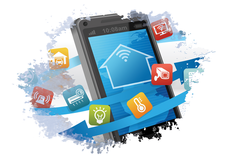Eclipse development tools for the Internet of Things
Gadget Talk

Eclipse IoT is a collection of 26 open source projects with the common goal of building an open development environment for the Internet of Things.
The Eclipse project is a vast and diverse effort to produce a universal open source collection of software development tools. Separate projects within the Eclipse umbrella target specific standards and use cases, creating helpful libraries and software components that (at least theoretically) plug seamlessly into the universal Eclipse development environment.
The recent emergence of the Internet of Things (IoT) has not gone unnoticed within the Eclipse community. IoT programs and protocols connect household appliances, light bulbs, temperature sensors, and motorized devices, requiring a new crop of programming standards and technologies. The Eclipse IoT working group [1] is a collaboration of individuals and organizations dedicated to "development, promotion, and adoption of IoT technology." The group encompasses a wide range of projects that extend the Eclipse vision to a new generation of open source IoT development tools.
Table 1 shows a summary of Eclipse IoT projects. Each project has a different emphasis. For example, the Paho library (see Table 1) handles data exchange via the MQ Telemetry Transport (MQTT), a common messaging protocol for open IoT. All Eclipse Foundation projects are under open source licenses and are therefore available free of charge.
[...]
Buy this article as PDF
(incl. VAT)
